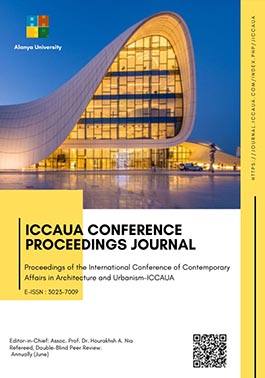Shaping Space with Color: Perception, Emotion, and Representation
DOI:
https://doi.org/10.38027/ICCAUA2025EN0389Keywords:
Color Theory, Architecture, Perception, Spatial Experience, Psychological Impact, Materiality, Digital Visualization, Design Strategy.Abstract
Color plays a fundamental role in architectural design, influencing both perception and emotional response within a built environment. Beyond its aesthetic and psychological impact, color is also an essential tool in architectural representation, shaping the way ideas, concepts, and spatial intentions are communicated. From hand-drawn sketches to advanced digital renderings, the evolution of representational techniques has transformed how architects visualize and materialize design solutions. This paper explores the intersection of color, perception, and representation in architecture, analyzing how chromatic choices affect spatial experience, cultural interpretation, and design communication. Through a multidisciplinary approach, the study examines historical and contemporary examples, technological advancements, and material innovations that expand the possibilities of color application in both built space and architectural drawing. By bridging perception and expression, this research highlights the crucial role of color in architectural practice, not only as a design strategy but also as a medium for articulating spatial narratives and engaging with users.
Downloads
Downloads
Published
How to Cite
Issue
Section
License
Copyright (c) 2025 Luis Moreira Pinto, Ana Fidalgo

This work is licensed under a Creative Commons Attribution 4.0 International License.




















